Where to dig in?
Speaking of best house plants, you’ll love how snake plants, ZZ plants, and pothos transform your home with minimal effort required. These hardy favorites thrive on infrequent watering, adapt to various lighting conditions, and naturally purify your indoor air while reducing stress levels. Spider plants self-propagate for free new plants, while Chinese evergreens add colorful patterns to any room. Jade plants bring succulent style with their drought-tolerant nature, and peace lilies clearly signal when they’re thirsty.
Strategic placement in odd-numbered groups creates stunning visual arrangements that’ll elevate your entire decorating game.
Why Low-Maintenance Plants Are Perfect for Modern Living
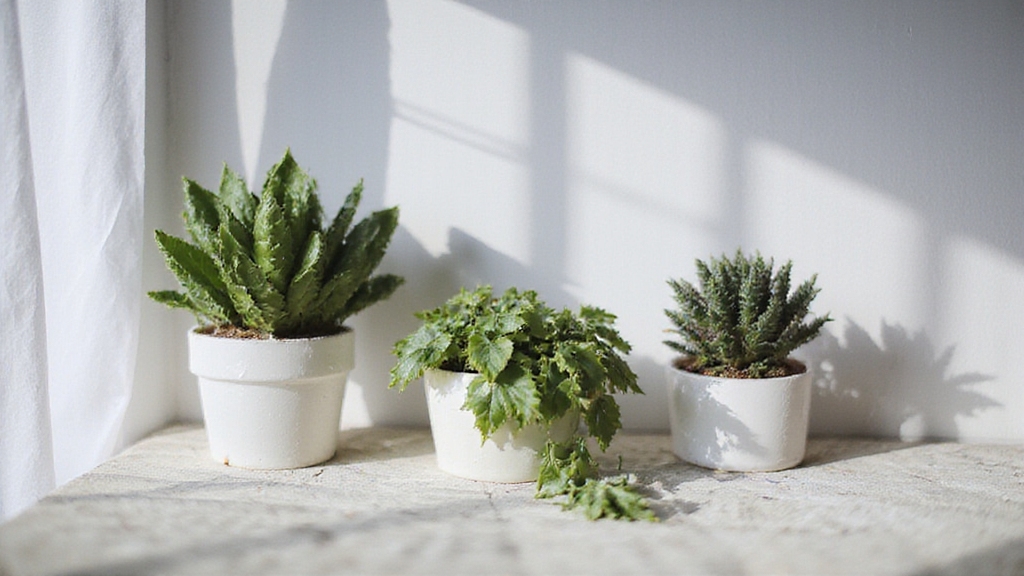
When life feels overwhelming with work deadlines, family responsibilities, and social commitments, you shouldn’t have to stress about keeping plants alive. Low-maintenance plants offer the perfect solution for busy modern lifestyles, providing natural beauty without demanding constant attention. These versatile plants adapt to various lighting conditions and interior styles, making them ideal for any living space.
You’ll spend less time watering and caring for them, which frees up your schedule for other priorities. They naturally purify indoor air by removing harmful pollutants like benzene and formaldehyde, creating a healthier home environment. Some popular low-maintenance options include Pothos and Succulents, which thrive in less-than-ideal conditions, making them suitable for beginners.
Beyond practical benefits, low-maintenance plants reduce stress levels and promote mental well-being. They create a serene, welcoming atmosphere that helps you unwind after demanding days while enhancing your home’s aesthetic appeal effortlessly. Research shows that students in classrooms with real plants demonstrated improved concentration and better attention compared to those with fake plants or no plants at all.
Snake Plant: The Ultimate Beginner-Friendly Choice
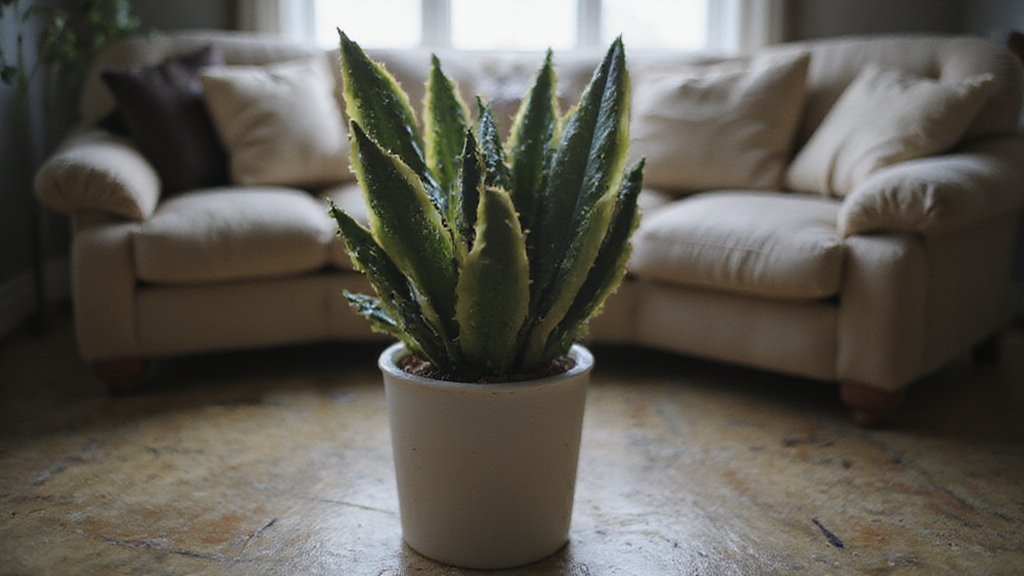
Among all the houseplants perfect for beginners, the snake plant stands out as the most forgiving and rewarding choice for your home. You’ll find this resilient plant thrives with minimal attention while delivering impressive benefits that transform your living space.
The snake plant delivers exceptional rewards for minimal effort, making it the ultimate beginner-friendly houseplant for any home.
Key advantages that make snake plants beginner-friendly:
- Air purification works 24/7 – NASA research confirms it removes benzene, formaldehyde, and xylene while producing oxygen at night
- Watering happens infrequently – You’ll only water when soil feels completely dry, preventing overwatering mistakes
- Light requirements stay flexible – It adapts to low light or bright indirect sunlight without complaint
- Growth remains manageable – Slow growth means repotting every few years, reducing maintenance demands
Snake plants thrive best in loamy soil, which offers an ideal balance of drainage and moisture retention for their optimal growth. You’ll appreciate how snake plants regulate humidity, reduce allergens, and create architectural interest with their striking upright leaves. This beautiful houseplant originates from tropical regions of Africa and Asia, bringing exotic heritage into your modern living space.
ZZ Plant: Thriving on Neglect and Low Light
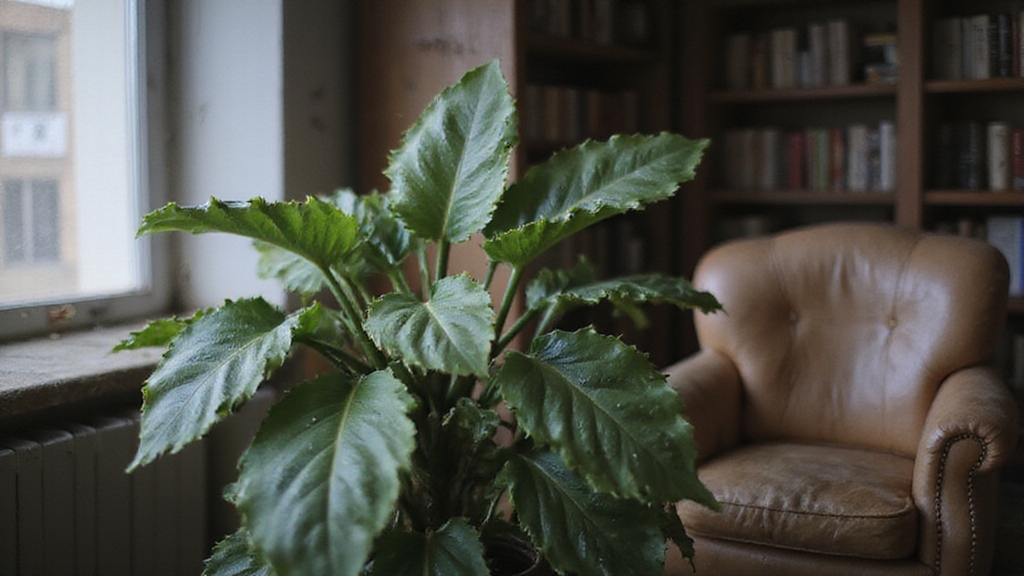
The ZZ plant earns its reputation as the perfect houseplant for busy lifestyles, forgetful waterers, and dimly lit spaces where other plants struggle to survive. You’ll appreciate its ability to thrive in low light conditions, though placing it near a north-facing or east-facing window provides ideal growth.
Water your ZZ plant only when the soil completely dries out, which typically means watering every few weeks. Use lukewarm water to avoid shocking the roots, and remember that less is always more with this drought-tolerant beauty.
Plant your ZZ in well-draining soil with adequate drainage holes to prevent root rot. A potting mix containing components such as peat moss and perlite is ideal for enhancing moisture retention and improving drainage. Apply a balanced 4-4-4 fertilizer once annually in spring, then enjoy watching your low-maintenance companion flourish with minimal attention throughout the year. The ZZ plant tolerates dry air exceptionally well, making it ideal for homes with low humidity levels.
Pothos: Fast-Growing Beauty for Any Space
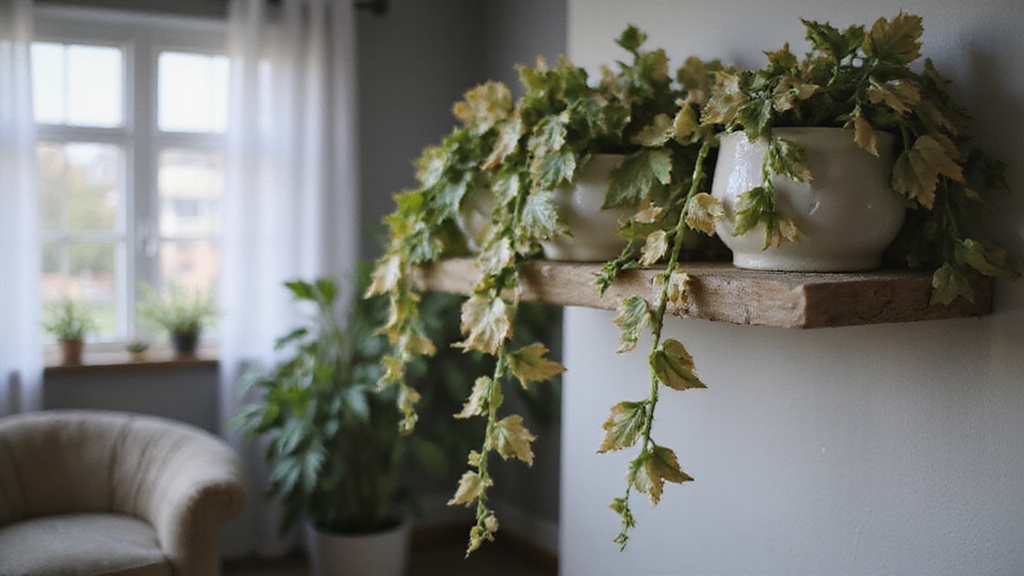
Pothos plants win over countless plant lovers with their stunning heart-shaped leaves, rapid growth, and remarkable ability to adapt to almost any indoor environment. You’ll find these versatile beauties thrive in low-light corners or bright, indirect spots near east- or west-facing windows. They’re perfect for busy lifestyles since they tolerate occasional neglect. Introducing sustainable practices such as composting, as highlighted in Grounded in Maine, could further enhance your Pothos care routine. For optimal growth, maintain 40-60% humidity using a humidifier if needed.
Essential Pothos Care Tips:
- Water Smart – Check soil every 1-2 weeks, watering when the top 2 inches feel dry
- Choose the Right Spot – Place in bright, indirect light to maintain beautiful leaf variegation
- Maintain Temperature – Keep between 65°F-85°F for ideal growth and health
- Prune Regularly – Trim long runners to encourage fuller growth and maintain your desired shape
With minimal effort, you’ll enjoy 5-10 years of lush, trailing greenery.
Chinese Evergreen: Colorful Foliage Without the Fuss
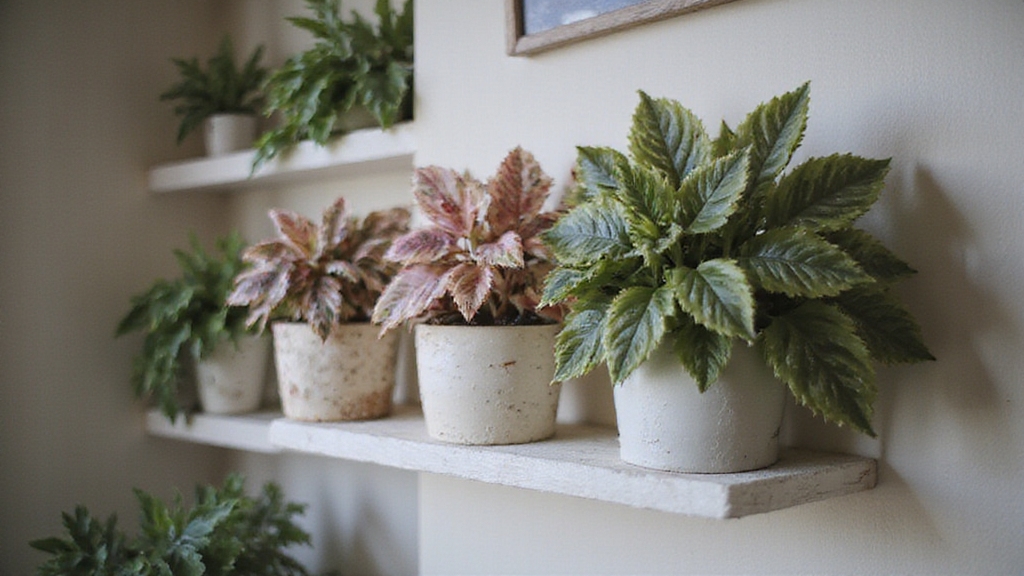
Chinese Evergreen plants bring vibrant color and tropical elegance to your home without demanding the constant attention that many decorative houseplants require. You’ll love their beautifully patterned leaves featuring green with silver splashes, stripes, or colorful speckles that add instant style to any room. Modern gardening tools like the Kent and Stowe Capability Trowel can assist in repotting these plants efficiently.
Chinese Evergreen plants deliver stunning tropical beauty with gorgeously patterned foliage while requiring minimal care from busy plant parents.
Place your Chinese Evergreen in low to bright indirect light, avoiding direct sunlight that burns leaves. Darker green varieties thrive in dimmer spaces, while colorful patterns need brighter light.
Water when the top two inches of soil feel dry, then water thoroughly. This drought-tolerant plant forgives inconsistent watering, making it perfect for busy lifestyles.
Remove dead leaves with scissors and fertilize every 4-6 weeks during spring and summer for ideal growth. These slow-growing plants can eventually reach up to 3 feet tall, making them excellent long-term investments for your indoor garden.
Peace Lily: Air-Purifying Elegance That Communicates Its Needs
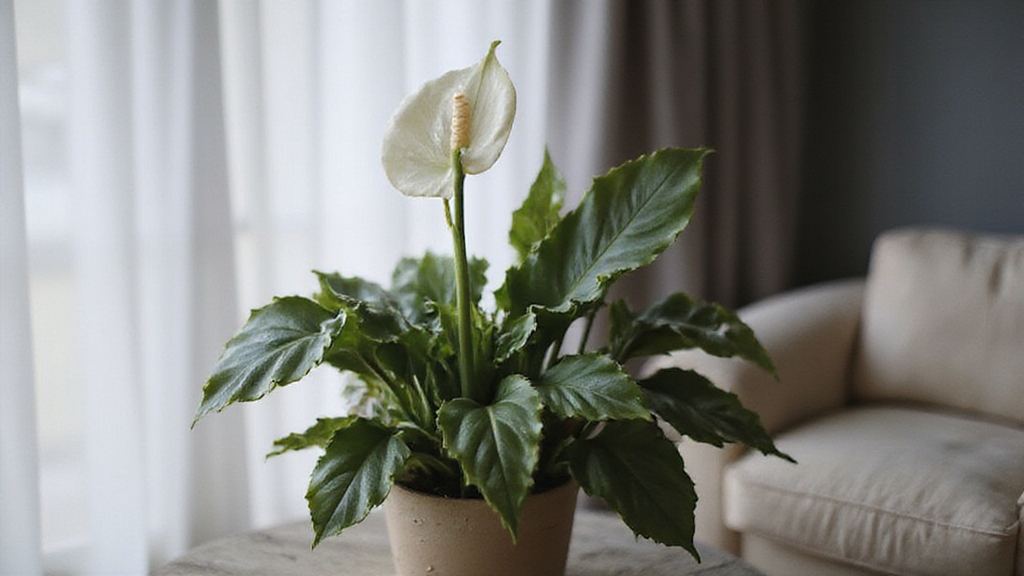
When you’re looking for a houseplant that literally tells you what it needs, Peace Lily stands out as nature’s perfect communicator. These elegant plants feature glossy, dark green leaves and stunning white flowers that symbolize peace. You’ll love how they purify your air by removing harmful pollutants like formaldehyde and benzene.
Peace Lilies are not only stylish but they are also relatively low-maintenance, similar to Organic Gardening for Everyone‘s approach which offers accessible basics for gardening beginners. They’ll droop slightly when thirsty, then perk up after you water them. Bright, indirect light works best, making north-facing windows ideal.
For optimal growth, position your Peace Lily near an east-facing window where it can receive gentle morning light. Fertilize only every 2-3 months with standard houseplant fertilizer. Reaching just 50 cm tall, they fit perfectly in small spaces.
Spider Plant: Versatile and Self-Propagating Wonder
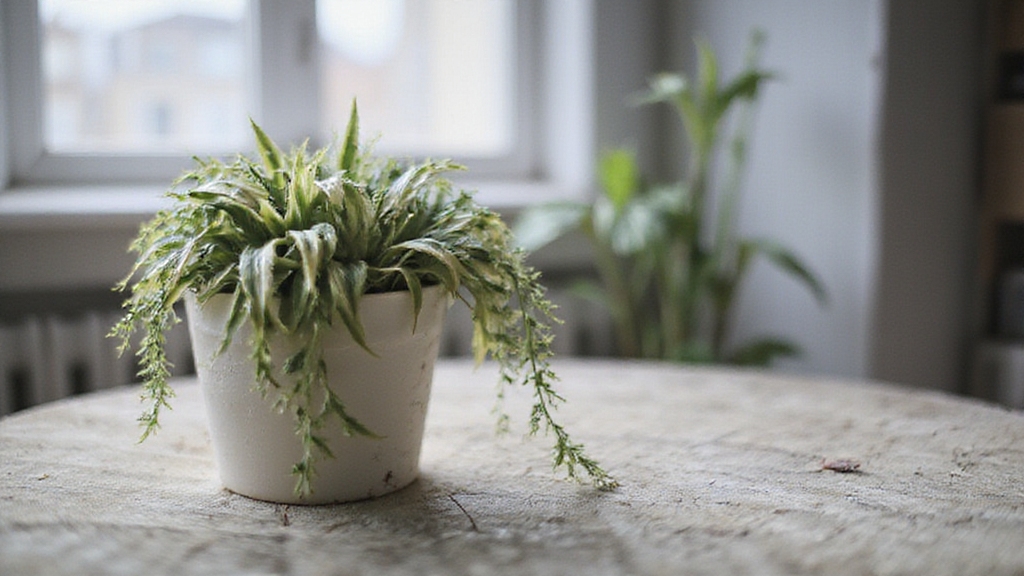
If you’re searching for a houseplant that practically grows itself while adding instant charm to any room, the Spider Plant delivers everything you need in one gorgeous package.
Easy Care Requirements
You’ll love how forgiving this plant is with your busy schedule. Water once weekly, keeping soil moist but never soggy. Check moisture by inserting your finger one inch deep into the soil. Place your spider plant in indirect bright light, avoiding direct sunlight that scorches leaves. Burpee Seeds and Plants also offer a variety of gardening supplies ideal for maintaining healthy spider plants.
Self-Propagating Magic
The most exciting feature is its ability to produce “spiderettes” or baby plants. These small offshoots grow naturally from the mother plant, creating instant new plants you can share with friends or expand your collection. Look for brown nodules forming under the leaves, as these will become the new plant’s roots.
Perfect for Any Space
Spider plants thrive in normal household temperatures and adapt beautifully to both modern and traditional décor styles.
Jade Plant: Succulent Style for Contemporary Homes
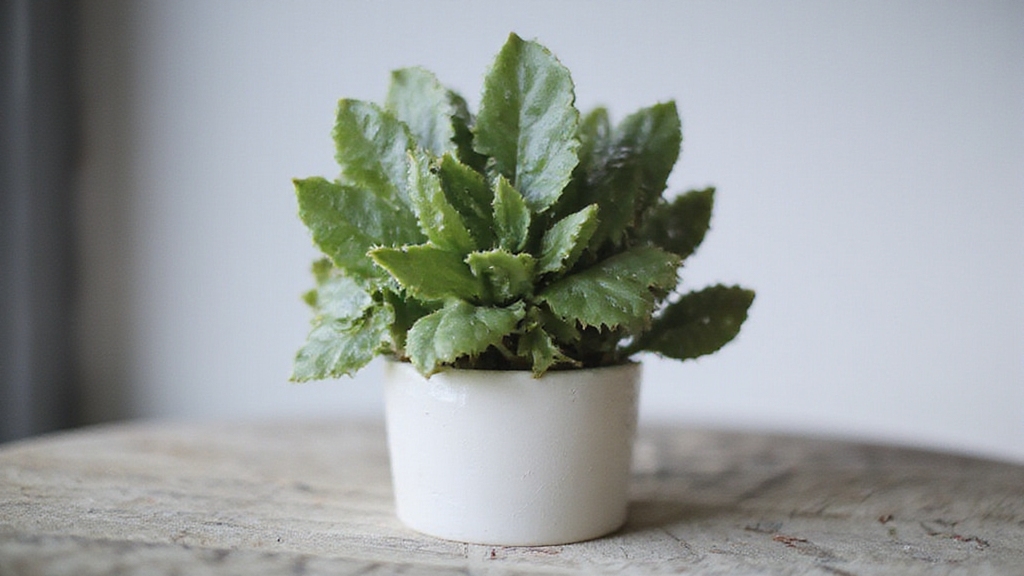
Although many houseplants demand constant attention, jade plants offer an invigorating alternative that perfectly suits today’s fast-paced lifestyle. These remarkable succulents can live up to 70 years, making them exceptional long-term companions for your home. You’ll appreciate their thick stems and tree-like appearance as they mature, adding sophisticated style to contemporary spaces.
Jade plants provide the perfect low-maintenance solution for busy homeowners seeking long-lasting, sophisticated greenery in their living spaces.
Here’s what makes jade plants perfect for busy homeowners:
- Minimal watering needs – only water when soil feels completely dry
- Bright indirect light preference – thrives near south or west-facing windows
- Well-draining soil requirements – use succulent mix with sand and perlite
- Temperature flexibility – comfortable in 65-75°F daytime conditions
To ensure optimal growth, utilize a nutrient-rich blend that incorporates elements like perlite or vermiculite for improved drainage and aeration. You’ll find these hardy plants nearly impossible to kill, requiring repotting just every 2-3 years while symbolizing prosperity. Beyond their aesthetic appeal, jade plants function as natural air purifiers, removing harmful toxins from your indoor environment.
Essential Care Tips for Effortless Plant Parenting
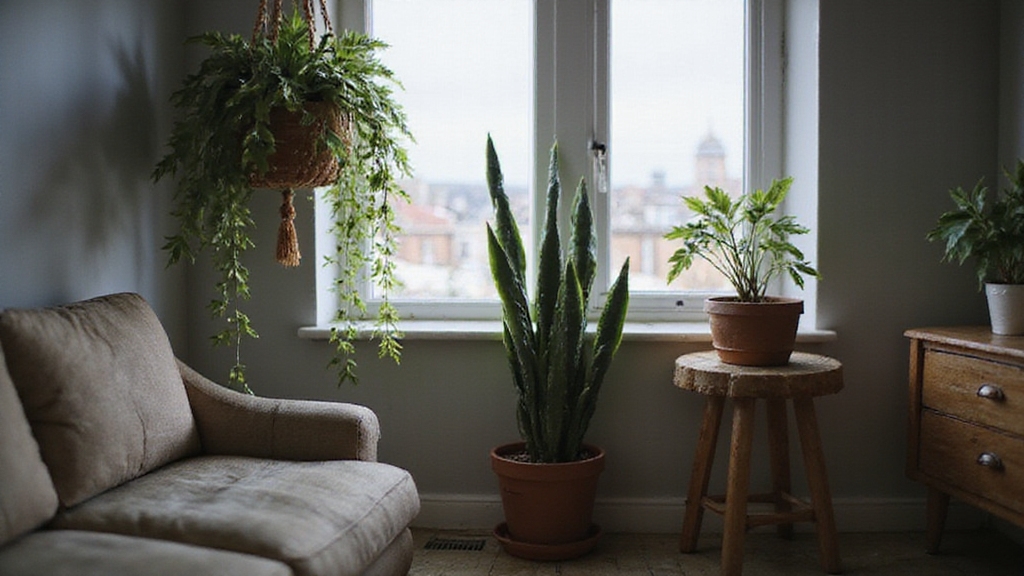
Mastering houseplant care becomes surprisingly simple once you understand the fundamental principles that keep your green companions thriving year-round.
Watering Made Easy
Check your plant’s specific needs first. Philodendrons and nerve plants prefer evenly moist soil, while echeverias need dry periods between waterings. Ponytail palms store water in their bulbous base, so they’ll forgive occasional neglect.
Light Requirements Simplified
Most houseplants thrive in bright, indirect sunlight. Heartleaf philodendrons tolerate low light conditions, making them perfect for darker corners. Place echeverias and nerve plants near windows for ideal growth. Ensuring appropriate light exposure is similar to selecting the right fertilizer, as both require understanding the unique needs of your plant or lawn.
Temperature and Drainage Basics
Maintain temperatures between 65°F and 75°F for best results. Use well-draining pots to prevent waterlogged soil, which causes root rot. Snake plants are particularly tolerant of dry conditions and rarely suffer from underwatering. Most plants tolerate average home humidity levels perfectly.
Creating Visual Impact With Strategic Plant Placement
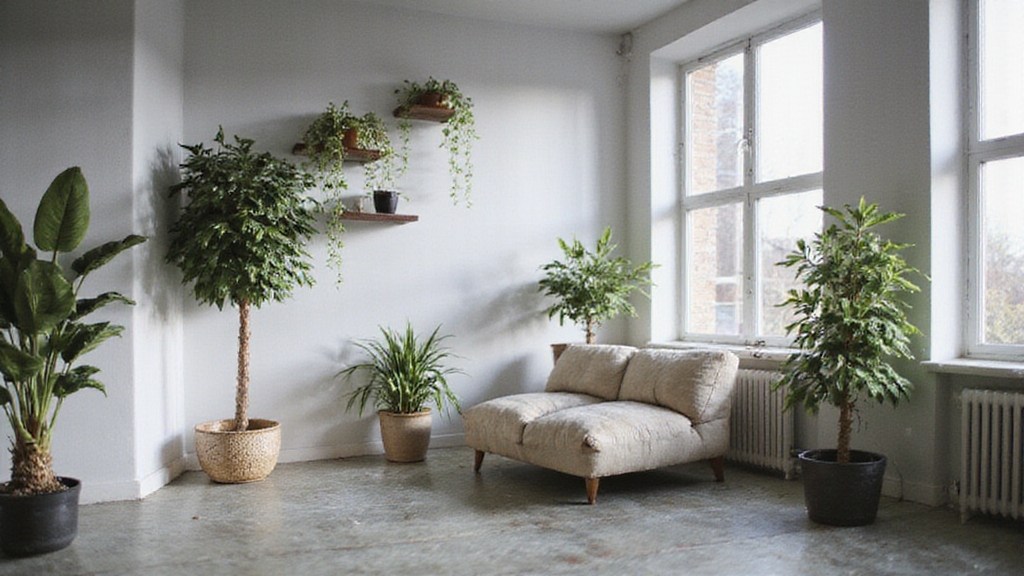
When you place your houseplants with intention and strategy, you’ll transform ordinary rooms into alluring living spaces that showcase your personal style.
Strategic houseplant placement transforms any ordinary room into a personalized, alluring living space that reflects your unique interior design style.
Strategic placement begins with understanding your space’s natural lighting, room dimensions, and existing décor. You’ll want to consider how each plant’s size, shape, and color complements your interior design goals. It’s also essential to consider comfort and durability when accessorizing your space, much like choosing the right gardening boots for challenging outdoor conditions.
Here are four essential placement strategies for maximum visual impact:
- Group plants in odd numbers to create naturally appealing arrangements that feel balanced yet organic
- Use height variety by placing plants on shelves, benches, or hanging planters to add dimensional layers
- Position statement plants in corners or near windows where they’ll draw attention and create focal points
- Balance symmetrically by placing matching plants on either side of furniture pieces or architectural features
These techniques guarantee your plants enhance rather than overwhelm your living space. Remember that curved furniture creates softer, more free-flowing visual lines that complement the organic shapes of your plants.
Frequently Asked Questions
Can I Travel for Weeks Without My Plants Dying?
You can travel for weeks without your plants dying if you prepare properly. Choose low-maintenance plants like pothos, snake plants, or ZZ plants that tolerate neglect.
Set up automated watering systems, group plants together for humidity, and arrange for someone to check them weekly. Use smart monitors to track moisture remotely, maintain stable temperatures, and return within four weeks for best results.
Do Low-Maintenance Plants Help Reduce Stress and Anxiety Levels?
Low-maintenance plants absolutely help reduce your stress and anxiety levels. You’ll experience lower cortisol levels, improved mood, and better overall well-being when you’re around plants.
Even simple care activities like watering provide stress relief. Plants create a naturally calming atmosphere in your space, and soil bacteria can reduce anxiety. You don’t need high-maintenance varieties to gain these mental health benefits.
Which Plants Are Safe for Homes With Cats and Dogs?
You can choose several pet-safe plants for homes with cats and dogs. African violets, Boston ferns, and spider plants offer colorful, low-maintenance options that won’t harm your pets.
Money trees and parlor palms provide elegant greenery, while haworthia and Christmas cacti need minimal water. Cat grass actually benefits your pets’ digestion. Always check the ASPCA’s non-toxic plant list before purchasing new plants.
How Much Money Should I Budget for Starting a Plant Collection?
You’ll want to budget around $200-500 for starting a basic plant collection. Begin with 8-12 affordable plants at $15-25 each, plus essential supplies like pots, soil, and fertilizer for roughly $100-150.
Set aside $50-75 for ongoing care costs during your first year. Start small with low-maintenance varieties like pothos, snake plants, and rubber trees. You can always expand your collection gradually as your confidence grows.
What’s the Difference Between Low-Light and No-Light Plant Requirements?
You’ll find that low-light plants need some ambient light, like enough to read a newspaper comfortably. These plants survive in 25-100 foot-candles from north-facing windows or indirect sources.
However, no-light plants don’t actually exist. All plants require some light for photosynthesis, so they’ll die in complete darkness. Marketing often misleads you with “no-light” labels for minimal-light plants.
Conclusion
You’re now equipped with six reliable plants that’ll transform your space without demanding constant attention. Start with one or two plants, place them strategically near windows or corners, and watch your home come alive. Remember, these plants forgive mistakes and actually prefer minimal care. You don’t need a green thumb to create a beautiful, healthy living environment that reflects your personal style and enhances your daily life.

